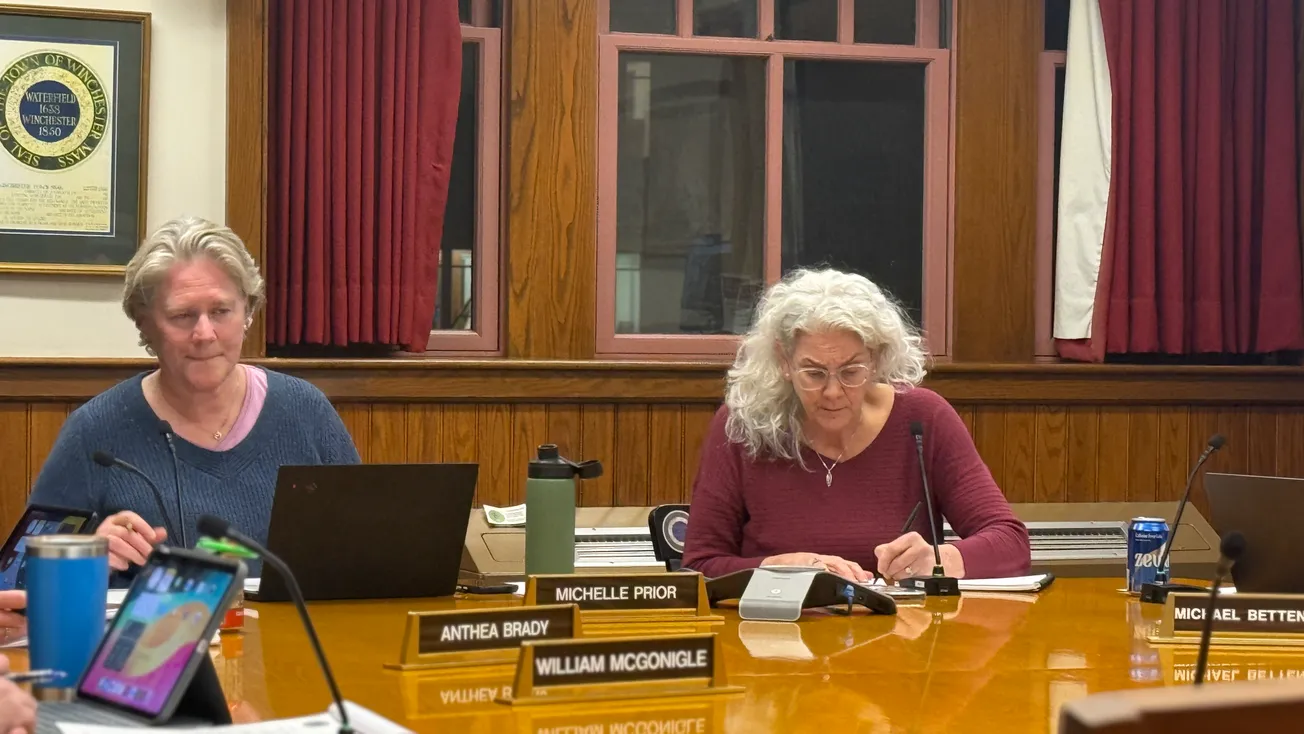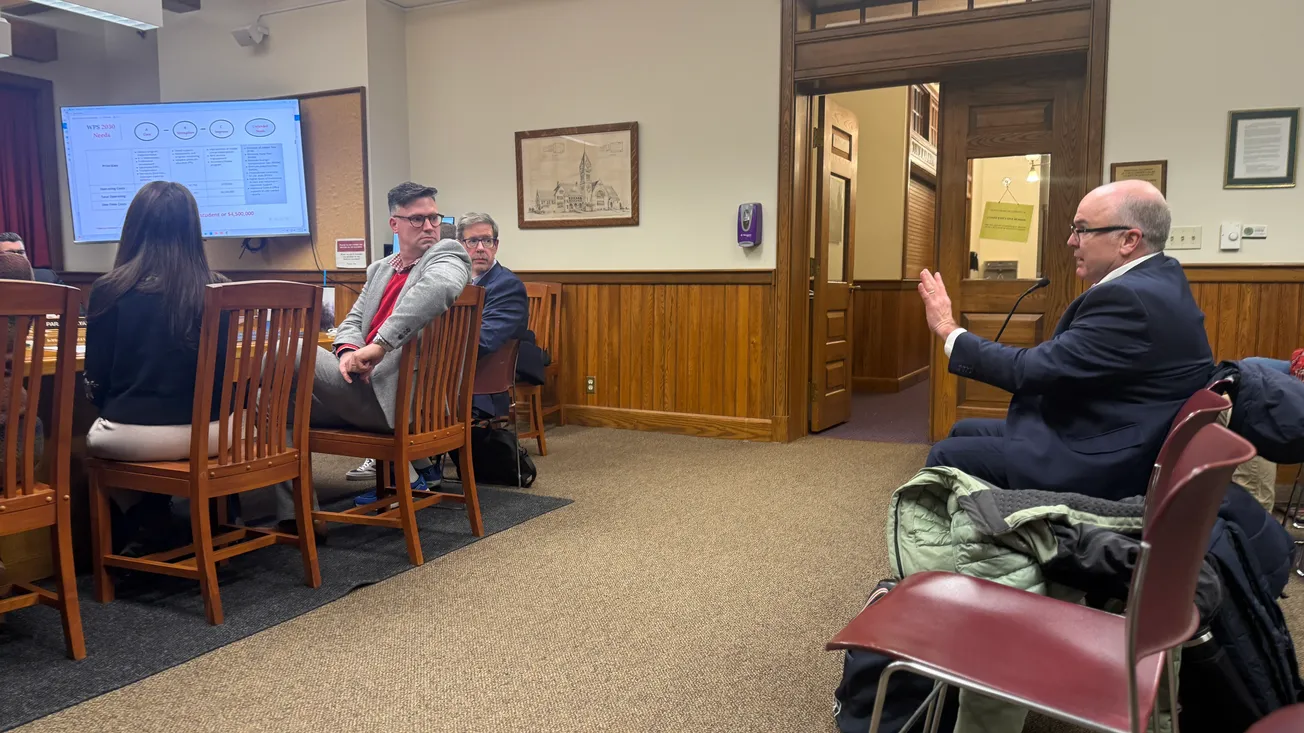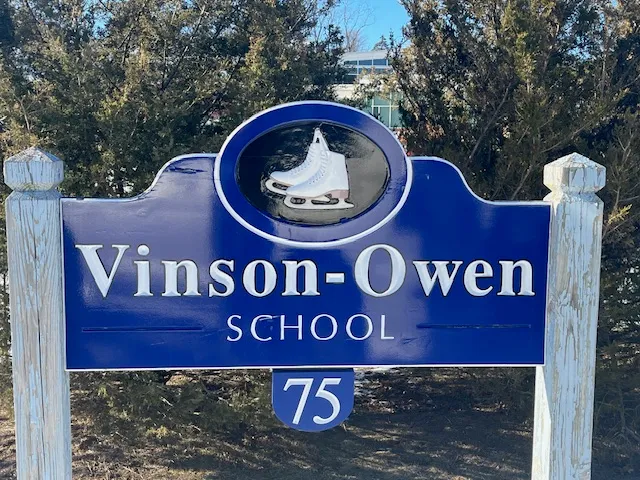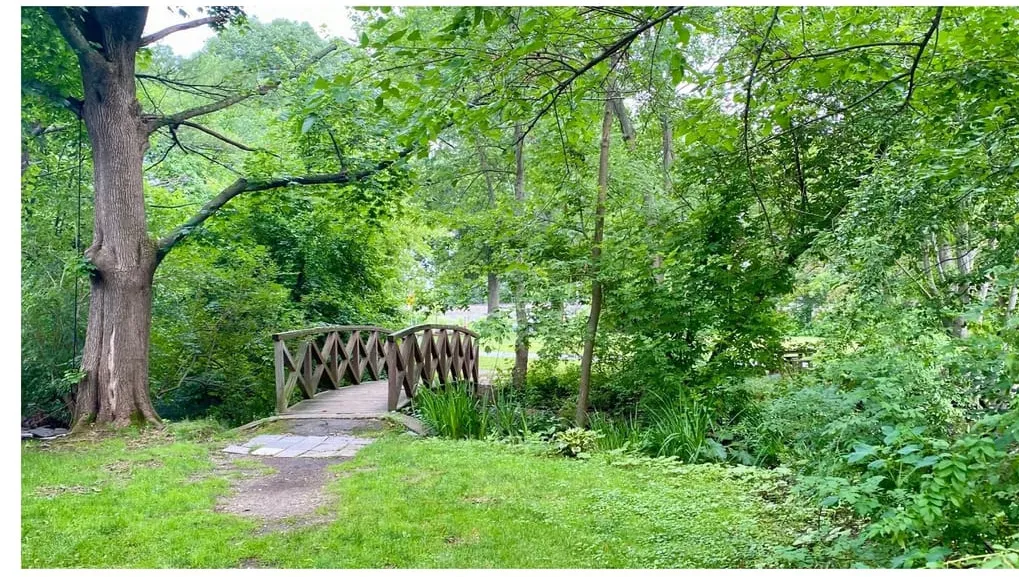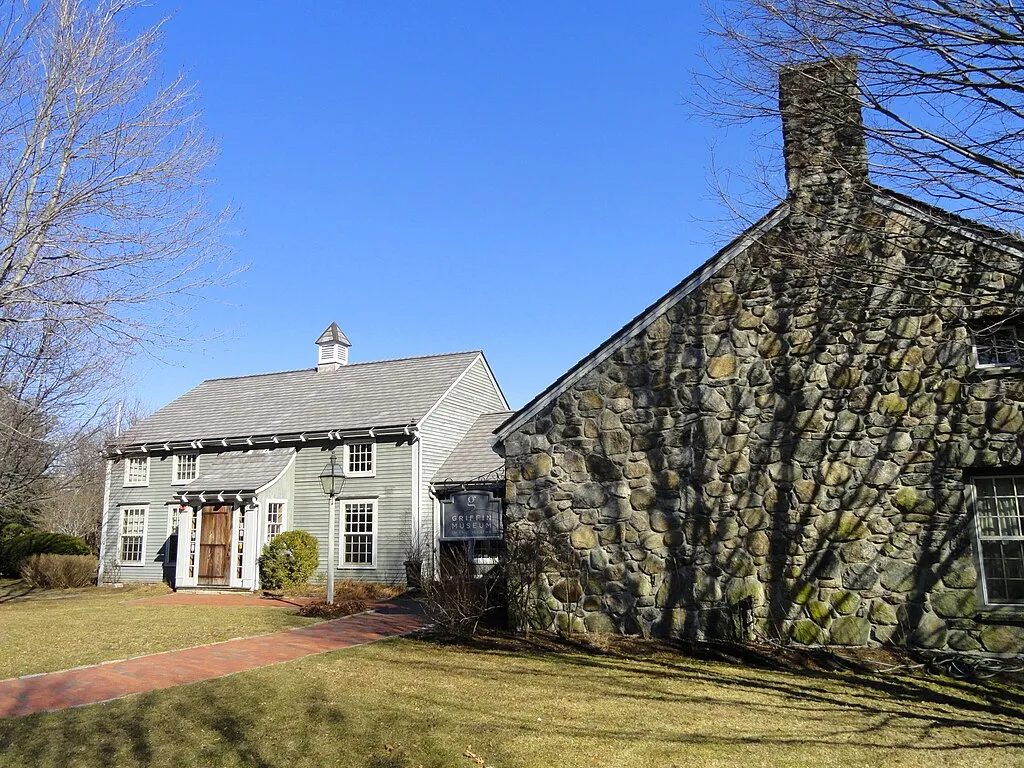Table of Contents
Winchester has lost 90 acres of tree canopy in just over a decade — roughly 68 football fields of tree cover — and residents and town officials are trying to figure out how to stop any more loss.
A 2023 analysis by PlanIT Geo found that Winchester’s tree canopy has dropped from 49.3% coverage in 2012 to 47% today.
“We’ve watched the suburban tree canopy just, frankly, get decimated,” said Austin Whitman, a volunteer with Winchester’s Permanent Street Tree Committee.
Much of the problem comes down to gaps in local policy. Winchester’s public shade tree bylaw, adopted in 2012, only protects trees on public property — along town streets, in parks and on school grounds. It does not apply to private properties, which make up the majority of the town’s green space.
“It specifically carves out, like in the first paragraph, this doesn’t cover trees on private lots,” said David Miller, chair of the tree committee.
When older homes are torn down and replaced with larger new houses, developers often clear entire lots, removing mature trees without needing to replant or pay fees. There is currently no requirement to offset these losses, meaning that trees which took 50 or even 100 years to grow can vanish in a few days.
Meanwhile, Winchester does not have a dedicated line item in its annual budget for tree planting or maintenance.
“Winchester has no line item in its budget anywhere that mentions trees,” Miller said. “Trees do get planted, to be sure, publicly, but it’s sort of a random thing.”
Instead, most of the town’s limited funding goes toward removing dangerous or dying trees — often a necessary but reactive measure. The town also lacks a full-time urban forester; the Department of Public Works director serves as tree warden but is not a certified arborist, meaning there is no professional focused solely on tree health and long-term planning.
“We don’t have the data that you might expect,” Whitman said. “You don’t necessarily have a way of getting them planted immediately.”
Climate impacts mount as trees disappear
The environmental impact is serious. Mature trees can lower neighborhood temperatures by as much as 10 degrees during heat waves. They help absorb 500 to 1,000 gallons of rainwater per year each, reducing flooding on streets and in basements.
Tree roots also stabilize soil and prevent erosion, a major concern in Winchester because of the town’s “V-shaped” topography that funnels water downhill into the Aberjona River and nearby neighborhoods.
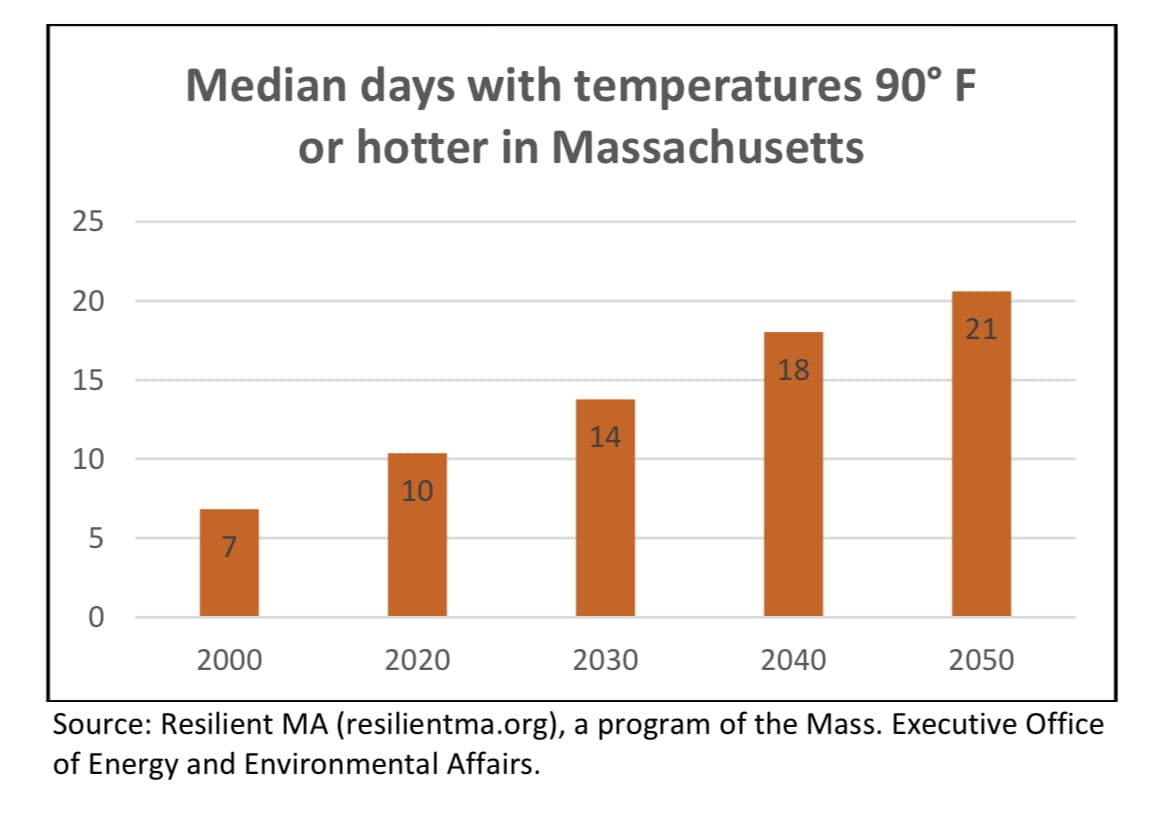
This cooling effect becomes especially critical as climate change increases extreme heat days. Winchester’s 2022 Heat Response Strategy and the National Institute of Health identifies tree preservation as a central approach to protecting vulnerable residents, particularly older adults over 65 living alone in homes without adequate air conditioning.
Climate projections show very hot days over 90 degrees will increase from approximately 10 per year currently to more than 20 by 2050. Trees provide vital relief through shade and evapotranspiration, which releases moisture into the air with a significant cooling effect involving tens of thousands of gallons of water per year.
“One of the charms of Winchester … was a well-treed neighborhood,” Whitman said. “And if you now drive down those streets, you’ll see most streets are largely devoid of trees.”
Data reveals accelerating losses
In recent years, Winchester has made efforts to better understand and plan for its trees. Using federal American Rescue Plan Act funds, the Permanent Street Tree Committee completed a detailed canopy assessment in 2023, comparing aerial images from 2013, 2018 and 2023.
This study revealed that Winchester lost nearly 10% of its public tree canopy just between 2018 and 2023. Sparse canopy over impervious surfaces is intensifying the town’s heat-island effect, degrading air quality and accelerating storm-water runoff.
Winchester has invested heavily in mapping its canopy and promoting tree awareness, but on-the-ground action has lagged. Trees appear as high-priority items in every major planning document — the 2020 Climate Action Plan, 2020 Municipal Vulnerability Preparedness Plan, 2030 Master Plan and 2022 Heat Response Strategy — all of which call for preserving and expanding the canopy to fight heat and flooding.
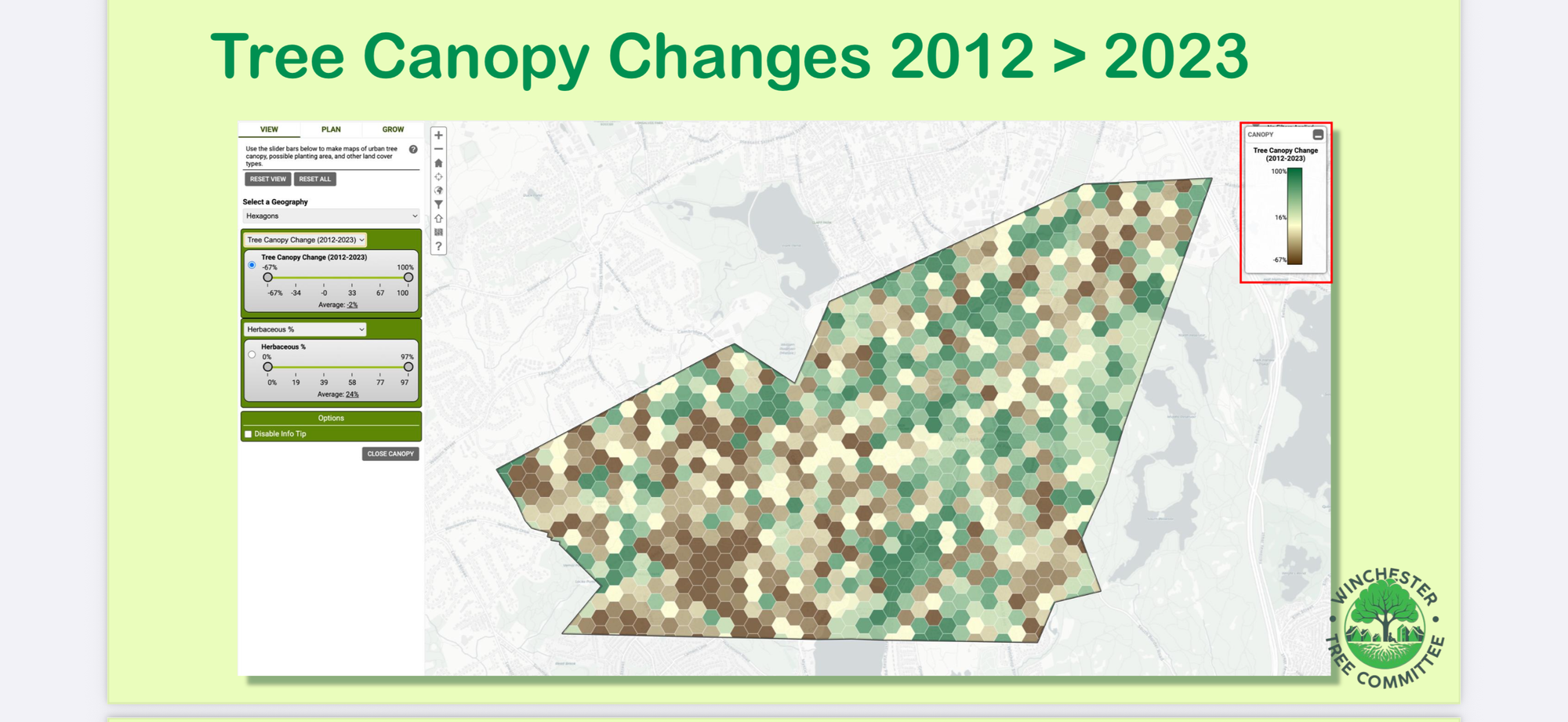
A recent presentation to the Select Board urged the start of “an era of preserving and enhancing our trees.”
This spring, Town Meeting approved a bylaw change expanding the Permanent Street Tree Committee from five to seven members to involve more residents and strengthen advocacy efforts.
“It gets more people who have joined the committee because they want to deal with the town’s trees,” Miller said.
Town Meeting also approved a “no net loss” policy for public trees. Under this policy, any public tree that is removed must be replaced. While largely symbolic for now, supporters believe it lays the groundwork for stronger funding and enforcement in the future.
Residents mobilize for solutions
Looking ahead, Winchester is working to create a nonprofit group called Friends of Winchester Trees. This 501(c)(3) organization would allow residents to make tax-deductible donations to directly support tree planting and care.
“Over the five- to 10-year period, I’d love to go to a point where we’re not just the permanent street tree committee, but we’re the tree committee,” Whitman said. “Where there’s enough interest across the town in the health of the town’s trees that we’re actually looking after and or some way influential around how the town thinks about trees across public and private property.”
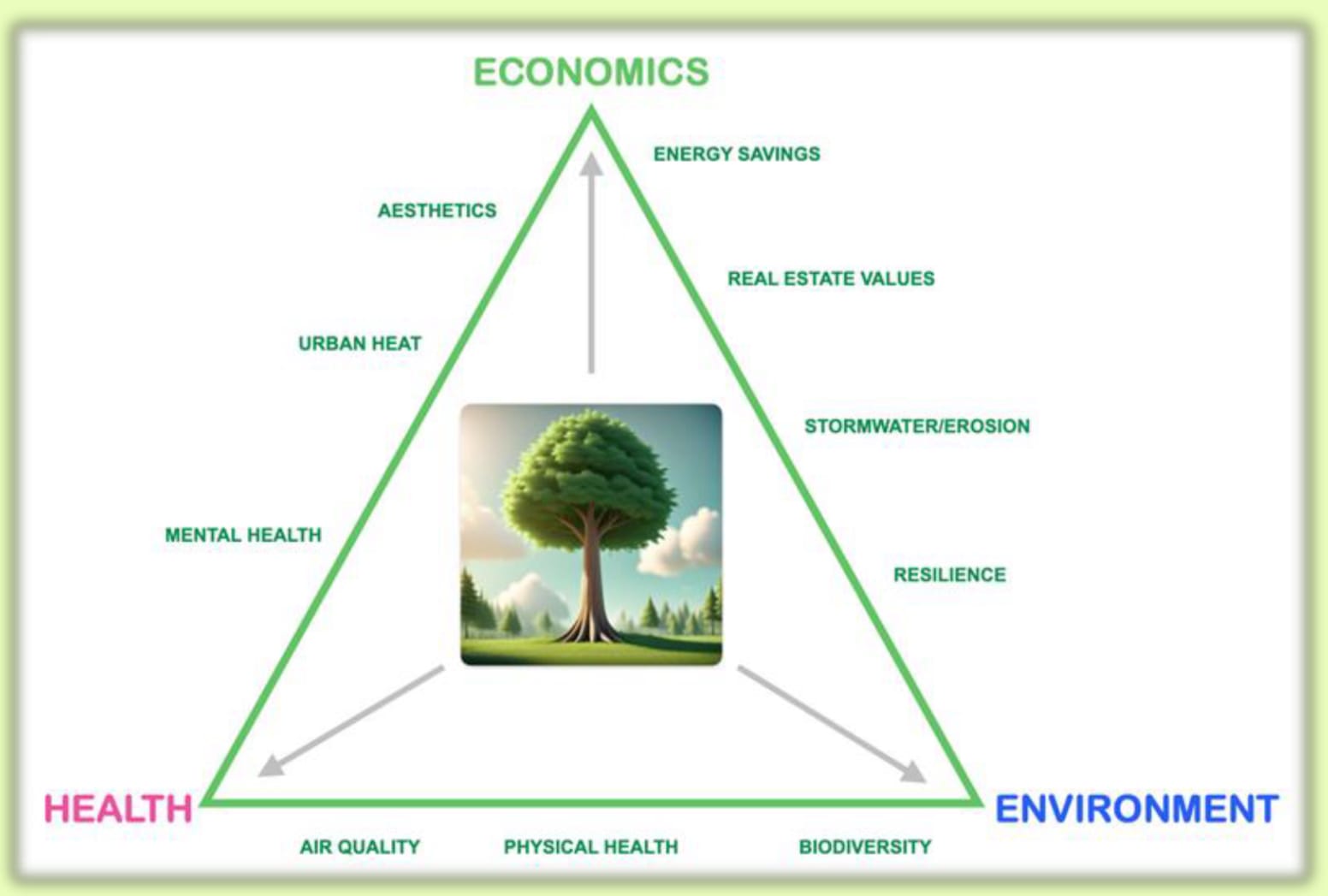
Planting new trees can be costly. A small sapling up to about 6 feet tall can cost between $95 and $300, including labor and early maintenance. Medium-sized trees 6 to 10 feet often run $300 to $700. Large, more mature trees that provide immediate shade can cost $1,000 to $2,500 or more, depending on species and site preparation needs.
“Most everyone is in favor of trees. They feel badly when trees are lost,” Miller said. “I don’t think people necessarily integrated the loss of, as Austin said, their favorite tree, with all the trees that are being lost in town on an ongoing basis.”


